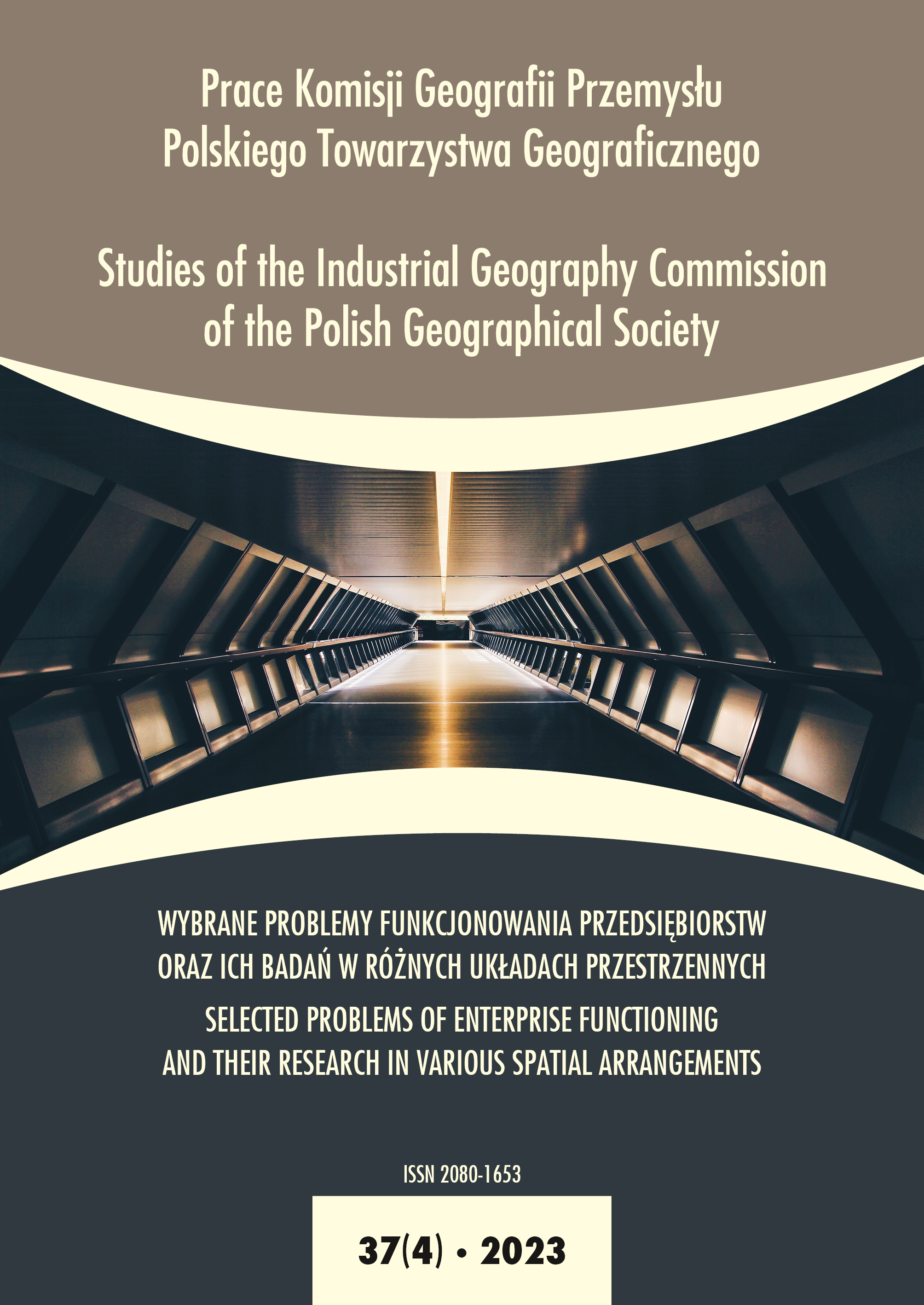Impact of innovation on employment and wage in industry
DOI:
https://doi.org/10.24917/20801653.374.2Słowa kluczowe:
innowacje, płace, zatrudnienie, przemysł, innowacje produktowe.Abstrakt
The innovative activity of industrial enterprises is one of the essential prerequisites for national socio- economic development. Innovations contribute to the growth of labour productivity, added value and profit, and, as a result, to an increase in earnings. Accordingly, the study of patterns of the impact of product innovation (expressed as an indicator of the share of innovative products in the volume of industrial products sold) on employment and earnings in the industrial sector of the economy has significant scientific and applied importance. In the article, using the example of Ukraine, a strong direct relationship between the innovativeness of products and industry share in employment is empirically proven (using correlation- regression methods). Using Almon’s method, a distribution- lag model (with a lag of three years) has been created, which reflects the high direct dependence of the average monthly earnings of a full- time employee in the Ukrainian industry on growth in product innovation. A deterministic economic- mathematical model of optimising the technological structure of existing industrial and innovative products in the manufacturing industry has been developed according to the criterion of increasing innovativeness. The modelling results give a scientific basis for strategic planning, as they allow the choice of such a target optimisation (level of product innovation) at which earnings in the manufacturing industry will reach the desired value.
Downloads
Metrics
Bibliografia
Cirera, X., Martins- Neto, A. (2023). Do innovative firms pay higher wages? Micro-level evidence from Brazil. Research Policy, 52, 104645. doi: https://doi.org/10.1016/j.respol.2022.104645
Crespi, G., Tacsir, E. (2011). Effects of innovation on employment in Latin America, 1–11. doi:https://doi.org/10.1109/ACSIP.2011.6064465
Croci Angelini, E., Farina, F., Pianta, M. (2009). Innovation and wage polarisation in Europe. International Review of Applied Economics, 23, 309–325. doi: https://doi.org/10.1080/02692170902811736
Eurostat. (2023). Retrieved from. https://appsso.eurostat.ec.europa.eu/ (accessed: 3.07.2023).
Evangelista, R., Savona, M. (2002). The Impact of Innovation on Employment in Services: Evidence from Italy. International Review of Applied Economics, 16, 309–318. doi: https://doi.org/10.1080/02692170210136136
Gao, Z., Wang, Z., Zhou, M. (2023). Is China’s Urbanization Inclusive? Comparative Research Based on Machine Learning Algorithms. Sustainability, 15(4), 3490.
Ishchuk, S., Sozanskyy, L., Kniaziev, S. (2023). Problematic issues of localization- based development of mechanical engineeringin Ukraine. Science and innovation, 19(1), 20–35. doi:https://doi.org/10.15407/scine19.01.020
Ishchuk, S., Sozanskyy, L., Pukała, R. (2021). Optimisation of structural parameters of the industry by the criterion of product innovation. Engineering Management in Production and Services, 13(3), 7–24. doi: https://doi.org/10.2478/emj-2021-0018
Ishchuk, S., Sozanskyy, L. (2022). National Mechanical Engineering in Conditions of Economic Globalization. Management and Production Engineering Review, 13(4), 107–125. doi:https://doi.org/10.24425/mper.2022.142399
Meriküll, J. (2010). The Impact of Innovation on Employment. Eastern European Economics, 48(2), 25–38. doi: https://doi.org/10.2753/EEE0012-8775480202
Palekhova, V., Kramarenko, O. (2020). The impact of technological innovations on employment in the financial sector. Technology audit and production reserves, 6, 45–49. doi: https://doi.org/10.15587/2706–5448.2020.220290
State Statistics Service of Ukraine. (2023). Retrieved from: https://ukrstat.gov.ua/ (accessed: 3.07.2023).
Su, C.-W., Yuan, X., Umar, M., Lobonţ, O.-R. (2022). Does technological innovation bring destruction or creation to the labor market?
Pobrania
Opublikowane
Jak cytować
Numer
Dział
Licencja
Prawa autorskie (c) 2023 Prace Komisji Geografii Przemysłu Polskiego Towarzystwa Geograficznego

Utwór dostępny jest na licencji Creative Commons Uznanie autorstwa – Bez utworów zależnych 4.0 Międzynarodowe.
Artykuły publikowane są zgodnie z warunkami licencji Creative Commons (CC BY-ND 4.0; uznanie autorstwa-bez utworów zależnych).

